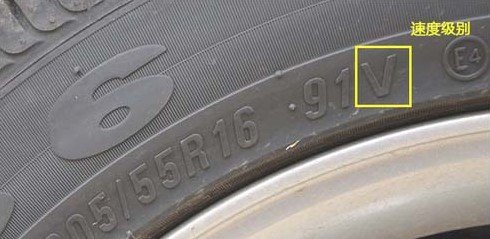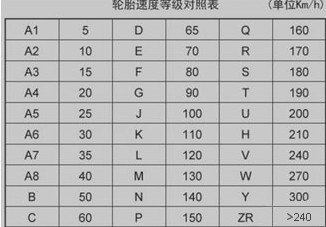What is a Speed Rating?
A speed rating is a symbol on the tire indicating its maximum speed capability. For example, the letter "V" on a tire means that its maximum speed is 240 km/h.

The concept of speed ratings was introduced in the 1960s to prevent vehicles from accelerating uncontrollably on highways, which could lead to dangerous situations.
Today, most passenger car tires have speed ratings between S and Y, meaning they can withstand speeds from 180 km/h to 300 km/h.
According to international standards, the speed rating of a car's tires must be higher than the car's designed top speed.

For A0-class vehicles priced between 70,000 to 100,000 RMB, with a top speed typically around 200 km/h, the recommended tire speed rating is H, which corresponds to a maximum speed of 210 km/h.
For A-class vehicles priced between 100,000 to 150,000 RMB, the recommended tire speed rating is V, which corresponds to a maximum speed of 240 km/h.
For B-class vehicles priced between 200,000 to 300,000 RMB, the recommended tire speed rating is W, which corresponds to a maximum speed of 270 km/h.
The Higher the Speed Rating, the More Expensive the Tire
The higher the speed rating of a tire, the more expensive it tends to be. This is because the manufacturing costs increase with the higher performance specifications required for high-speed ratings.
Generally, for tires of the same brand and size, those with a higher load index and speed rating will offer better performance and be priced higher. For example, a Michelin tire with a 91V rating will cost 30-40 RMB more than a 91H-rated tire of the same size.
Speed Rating Affects Tire Performance
At high speeds, tires generate heat due to compression and deformation. Tires with lower speed ratings will deform more severely under these conditions, generating more heat and potentially damaging the tire structure. This can shorten the tire's lifespan and increase the risk of a blowout.
To better manage tire deformation and heat buildup, high-speed-rated tires are reinforced in the shoulder and tread areas. This not only reduces deformation during rolling but also enhances grip and handling.
Therefore, when purchasing tires, car owners should pay attention not only to the brand but also to the full tire specification. If the brand, tread pattern, size, and aspect ratio are the same, but the speed rating is significantly lower, the new tires might only be suitable for use as spares.
Prev: Why Do Tires Bulge?
Next: Why Are Car Tires Black?



